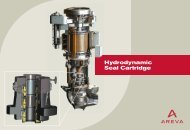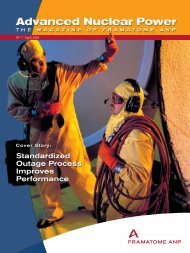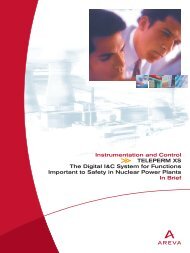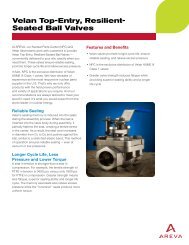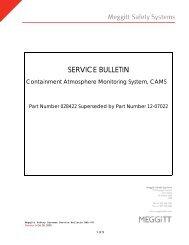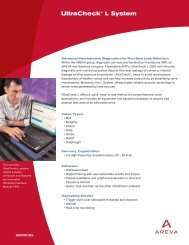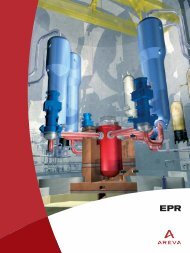Download - AREVA
Download - AREVA
Download - AREVA
- No tags were found...
You also want an ePaper? Increase the reach of your titles
YUMPU automatically turns print PDFs into web optimized ePapers that Google loves.
Industry InsightsUS and EU Agree to WorkTowards a Hydrogen Economybasis that will promote the developmentof a hydrogen economy.Achieving a hydrogen-oriented economywill take 20 to 30 years, EU VicePresident Loyola de Palacio told thoseattending an EU conference onhydrogen in June 2003. That’s why“we must start planning and developingpolicy decisions now,” said the VicePresident of the EC and Commissionerfor Energy and Transport.One of the biggest challenges is cost.The EU expects to spend between250 million and 300 million euros overthe next four years to support hydrogenand fuel cell research and demonstrationprojects. But that’s just a drop in theocean. Billions of euros will be needed“to trigger the process,” accordingto Loyola de Palacio. Much of thismoney – at least initially – must comefrom the public sector, according toan EU working group.US Energy Secretary, Spencer Abraham and Loyola de Palacio,EC Vice President, after signing the agreement to pool researchefforts to find a long-term solution to the world’s energy andtransport problems.The European Union (EU) andthe United States are cooperatingin their efforts to lay the foundationfor a hydrogen economy. Both see a rolefor nuclear energy in achieving theirgoal of a sustainable energy future.The idea of a hydrogen economy isn’tnew. In 1875, the French author JulesVerne predicted that the componentsof water – hydrogen and oxygen –would provide boundless electricityand heat. But until now, it’s been thestuff of fiction.That may be about to change. TheUnited States and the European Unionhave agreed to take the first step onwhat will be a long and costly journeyto a hydrogen economy.The appeal of such an economy isirresistible – an inexhaustible, securesupply of non-polluting energy thatwould ensure sustainable development.Needed: a collaborativeapproachBut getting there will take considerabletime, money and commitment. That’swhy the US Department of Energy(DOE) and the European Commission(EC) intend to collaborate in developingthe technical, legal and commercialDOE, too, has pointed out the needfor a public sector role. In a reportto the US Congress, the DOEsaid that the high cost and risk ofovercoming technical and institutionalbarriers would discourage a companyor consortia from making the “hugeinvestments” required. The federalgovernment must be involved. “Butthe promise of hydrogen is too greatto forego investing in its potential,”said US Energy Secretary SpencerAbraham at the June EU conferenceon hydrogen.To formalize cooperation betweenthe EU and the United States,Abraham proposed the establishmentof the International Partnership forthe Hydrogen Economy. He cited theGen IV nuclear reactor project as a“perfect example” of such collaboration.6 Advanced Nuclear Power N O 9 November 2003



